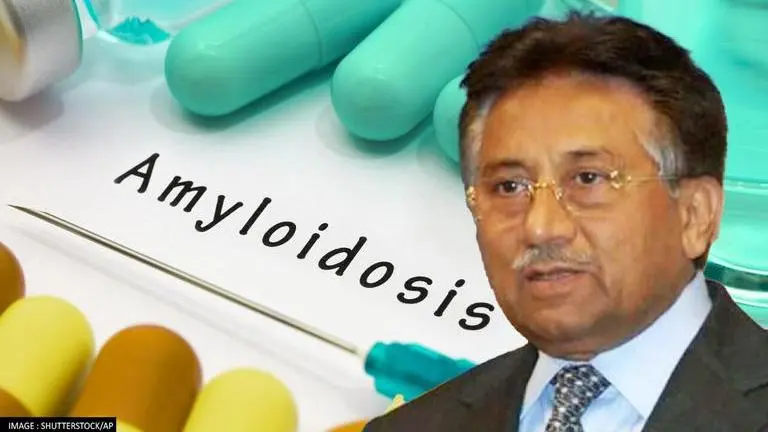Updated 5 February 2023 at 14:57 IST
What is Amyloidosis? The rare disease that ex-Pak President Pervez Musharraf succumbed to
Pakistan’s erstwhile president Pervez Musharraf breathed his last at age 79 on Sunday at a hospital in Dubai, succumbing to a long battle with Amyloidosis.
- World News
- 2 min read

Pakistan’s erstwhile president Pervez Musharraf breathed his last at the age of 79 on Sunday at a hospital in Dubai, succumbing to a long battle with Amyloidosis, a rare disease. Last year, his family said that the disease had posed complications that required medical treatment. “Going through a difficult stage where recovery is not possible and organs are malfunctioning,” his family members had said in June 2022, according to a tweet shared by the ex-president’s office.
According to the United Kingdom’s National Health Service, amyloidosis is an umbrella term used to describe a group of serious conditions caused by the buildup of a protein known as amyloid. The deposits of the proteins can build up in various tissues and organs of the body, causing complications and inhibiting proper functioning. If left untreated, the disease can lead to organ failure.
The most common type of the disease is AL amyloidosis, which shows its presence in the body with various symptoms based on the tissues and organs it has affected. When the disease targets a kidney, the ailing person can experience fatigue, swelling (mostly in the legs), and loss of appetite.
Symptoms and treatment
If the buildup occurs in the heart, it can lead to heart failure and create symptoms like shortness of breath and abnormal heart palpitations. Other common symptoms include nausea, fainting, dizziness, bruising, and numbness. AL amyloidosis is caused due to an abnormality in the bone marrow’s plasma cells, which create abnormal forms of light chain proteins that subsequently enter the bloodstream, thus forming amyloid deposits.
Advertisement
It is not a genetic disease, and therefore, cannot be passed by an affected individual to his or her children. The treatment of the disease remains complex in modern medical science, which currently has no cure for it as the deposits cannot be eradicated from the body directly. However, treatments can stop the growth and production of abnormal proteins, helping the body remove the deposits gradually. Most cases of amyloidosis require steroids and chemotherapy, which kills abnormal cells in the bone marrow.
Published By : Deeksha Sharma
Published On: 5 February 2023 at 14:57 IST
